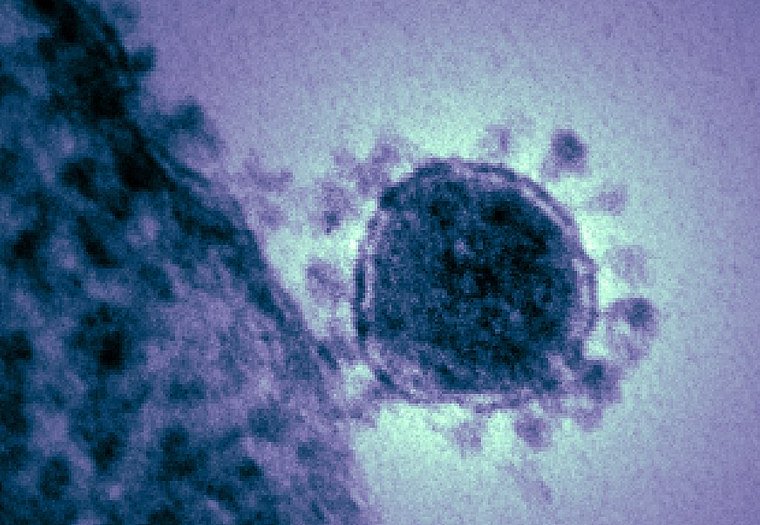Directed by Steven Soderbergh; written by Scott Z. Burns; cinematographed by Steven Soderbergh; director of photography, Peter Andrews; edited by Stephen Mirrione; music by Cliff Martinez; production design by Howard Cummings; costumes by Louise Frogley; produced by Michael Shamberg, Stacey Sher and Gregory Jacobs. Released in Sep. 2011 by Warner Brothers Pictures. Running time: 106 minutes. Rated PG-13
Starring: Marion Cotillard as Dr. Leonora Orantes, Matt Damon as Mitch Emhoff, Laurence Fishburne as Dr. Ellis Cheever, Jude Law as Alan Krumwiede, Gwyneth Paltrow as Beth Emhoff, Kate Winslet as Dr. Erin Mears, Bryan Cranston as Rear Admiral Lyle Haggerty, Sanaa Lathan as Aubrey Cheever, Jennifer Ehle as Dr. Ally Hextall, Demetri Martin as Dr. David Eisenberg, Elliott Gould as Dr. Ian Sussman, Chin Han as Sun Feng and Griffin Kane as Clark Morrow
When the medical thriller movie Contagion came out in 2011, it was widely praised for its realistic portrayal of a global pandemic scenario. In recent weeks, as the real-life outbreak of coronavirus disease 2019 (COVID-19) has spread around the world, there’s been a surge of renewed interest in the film. The virus depicted in the movie is many times deadlier than the one responsible for COVID-19 (SARS-CoV-2), and the mayhem it causes is likewise far direr than what we’re likely to see as a result of our current pandemic. Still, Contagion has important information to impart on present-day viewers as we collectively weather COVID-19.
MEV-1 is the name of Contagion’s fictional virus. As with SARS-CoV-2, it’s a novel virus, meaning it has never been in the human population before, so no one has immunity to it. It also has much the same origin as SARS-CoV-2, initially appearing in China and traveling from animals to humans by way of exposure to infected animal products. Its fatality rate, however, is at least 10 times that of SARS-CoV-2. And unlike SARS-CoV-2, which is mostly limited to the respiratory system, MEV-1 attacks both the lungs and the brain, causing headaches and seizures in addition to coughing and fever. Gwyneth Paltrow plays Beth Emhoff, an executive who contracts the first documented human case of MEV-1 on the south coast of China and then brings it to the United States.
Contagion deftly juggles parallel plot threads and geographical locations. In Minneapolis, Beth reunites with her family and unknowingly infects her husband Mitch (Matt Damon) and son Clark (Griffin Kane). Around the world, other hapless victims begin succumbing to MEV-1, including a London woman who drops dead in her bathroom and a Hong Kong man who stumbles in front of an oncoming truck. In China, World Health Organization (WHO) epidemiologist Dr. Leonora Orantes (Marion Cotillard) sets to work tracing MEV-1 back to its original carrier. At the headquarters of the U.S. Centers for Disease Control and Prevention (CDC), the agency’s director, Dr. Ellis Cheever (Laurence Fishburne), begins responding to the U.S. outbreak. And in San Francisco, unscrupulous blogger and conspiracy theorist Alan Krumwiede (Jude Law) starts cooking up a scheme to get rich off the disease.
Cheever’s protégé is the dedicated, no-nonsense Dr. Erin Mears (Kate Winslet). Sent to Minnesota to investigate Beth’s death, Mears serves as the movie’s vehicle for presenting key concepts and terminology to the audience. For example, she defines <em>fomites</em>, or surfaces that transmit pathogens after picking them up from infected individuals. (MEV-1 and SARS-CoV-2 both spread through fomites, though their primary means of transmission is via respiratory droplets produced when people cough, sneeze or talk.) Mears also accessibly explains the concept of R0 (pronounced “R-naught”), a mathematical equation that tells how many people, on average, a disease-infected individual will go on to infect. With an R0 of two (the bottom end of the range for both MEV-1 and SARS-CoV-2), the numbers add up quickly, going from two to four to eight to 16 in just four steps.
The movie provides an education in how epidemiologists identify those who have had possible contact with disease-infected individuals, a process known as contact tracing. While in China, Beth went to a casino, one of the most fertile potential breeding grounds for a virus given how many different visitors handle the same chips and use the same slot machines. Dr. Orantes and her Chinese colleague Sun Feng (Chin Han) review security footage of Beth in the casino, pausing at key moments when Beth could have either contracted or transmitted the virus. In addition to giving the scientists vital clues about the early transmission of MEV-1, this scene teaches viewers about ways in which a pathogen like MEV-1 could spread.
The propagation of MEV-1 is exactly in line with how real epidemics progress. Isolated cases give way to clusters, which in turn—thanks to the power of exponential growth—lead to an explosion. Because most of us aren’t used to thinking in terms of exponential change, the explosive phase tends to creep up on us. There just seems to be a point when the virus is suddenly everywhere.
Contagion owes its realism to extensive input from experts in epidemiology, veterinary pathology and other related fields, who vetted the movie for scientific accuracy at every stage of its production. They made sure the scientist characters had the right lab equipment and used the right jargon. Even small details like the idle banter between two CDC virologists (played by Jennifer Ehle and Demetri Martin), as they work on sequencing and analyzing the MEV-1 genome, have a ring of authenticity.
A core theme of Contagion is its characters’ willingness to bend and break rules and laws, some for completely selfless reasons, others to spare themselves the loss of loved ones and still others for personal gain. Jennifer Ehle’s CDC virologist, Dr. Ally Hextall, commits what is unquestionably the bravest and noblest breach of protocol. Like Jonas Salk before her, with his polio vaccine, she risks death by testing her experimental MEV-1 vaccine on herself, knowing that to wait for formal clinical trials would be to let untold additional lives be lost. At the opposite end of the morality spectrum is Krumwiede, who ends up being charged with manslaughter for encouraging his followers to reject the MEV-1 vaccine in favor of a naturopathic remedy he knows to be ineffective.
While the entire cast gives solid performances, there are some standouts. As you may have guessed, Ehle’s is my favorite. In one of the movie’s best scenes, she visits her ailing father, a fellow virus researcher, both to test out her vaccine on herself and to have what may well be their last heart-to-heart conversation. Only slightly less compelling are Law’s turn as the slimy scammer, Fishburne and Winslet’s touching but ultimately tragic mentor-mentee relationship and Damon’s arc from dazed grief to fierce paternal protectiveness to man at peace with the shape his life has taken.
The present popularity of this movie stems from how closely its scenarios resemble contemporary experience. Current public discourse is filled with talk of physical distancing, the need to avoid crowds and the importance of thorough handwashing and not touching our faces. Characters in Contagion talk in the same manner and use the same buzzwords we’re using now. Other similarities to our present situation include scenes of borders closing, schools and businesses shuttering, panic buying at supermarkets, eerily deserted public spaces, gymnasiums turned into temporary hospitals and leaders doing their best to halt the disease’s spread without inciting panic. Contagion also effectively captures the loneliness that comes of self-isolation, as Mitch’s teenage daughter Jory (Anna Jacoby-Heron) struggles to cope with prolonged home confinement, unable to go to school or see her boyfriend—just as many people are having to do right now.
There are, however, some significant differences between the events of Contagion and what’s happening in the real world now. The movie covers a period of four months, which is roughly the amount of time that has gone by since the first cases of COVID-19 appeared. But by the end of Contagion’s four-month interval, the death toll is orders of magnitude higher than the number of fatalities so far from COVID-19, and civil disorder has risen to a level that we mercifully have yet to see in reality. Desperate people loot shops for food, water and medicine, and the authorities are powerless to control the chaos. On the positive side, things also take a dramatic turn for the better with the development and worldwide distribution of an MEV-1 vaccine, something that’s still at least a year out for us with COVID-19. (This is one of the film’s few implausibilities—it takes years, not months, to develop a vaccine.)
This movie won’t have an impact on everybody. In my own community, there are still those who believe COVID-19 to be a hoax. They hurl abuse at those who take it seriously. I’ve heard tales of people mockingly spreading their germs around public spaces. It’s sad to say, but I think the only two things that would change these people’s perceptions would be personal tragedy or the appearance of a virus every bit as diabolical as the made-up one in Contagion.






